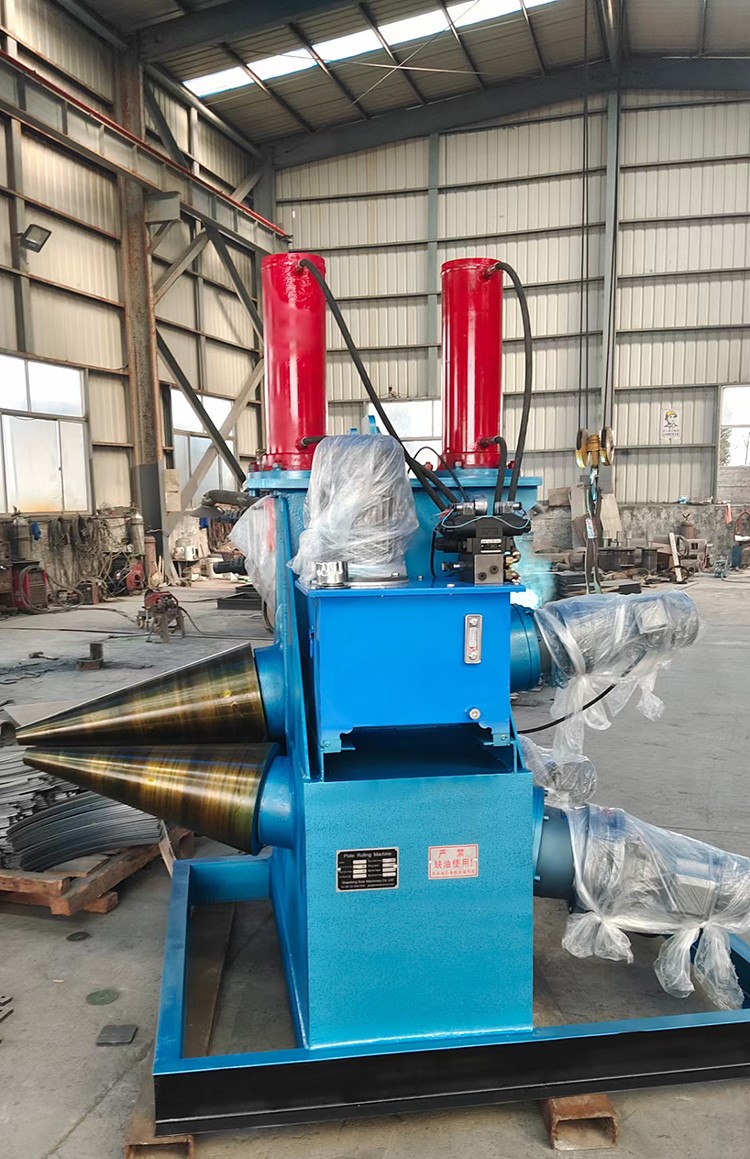

We are a professional cone rolling machine manufacturer with over 10 years of industry experience. Today, we would like to introduce the causes of excessive oil temperature in cone rolling machine hydraulic systems and measures to reduce the temperature:

As a key piece of equipment in metal plate processing, the pressure stability of a cone rolling machine's hydraulic system directly affects forming accuracy and equipment service life. Maintaining system pressure stability requires comprehensive measures from three aspects: design configuration, daily maintenance, and troubleshooting.
1. Properly Configure Hydraulic Components
The stability of a hydraulic system primarily depends on the selection and matching of components. The rated flow rate of the oil pump should be slightly higher than the maximum system demand to avoid pressure fluctuations caused by overload operation. In circuit design, using pilot-operated relief valves instead of direct-acting valves can more accurately control the upper pressure limit. For applications with impact loads, accumulators should be added to the main oil circuit to use nitrogen gas bladders to absorb pressure pulsations. The installation location of pressure regulating valves should be close to the actuator to shorten the pressure feedback path. When selecting cylinders, the match between the piston rod diameter and the load should be maintained within the range of 85% to 110% to avoid system pressure loss due to insufficient or excessive thrust.
2.Hydraulic Fluid and Sealing Management
The quality of hydraulic fluid directly affects pressure transmission efficiency. Use ISO VG46 or VG68 anti-wear hydraulic fluid with a viscosity index exceeding 90 to ensure stable oil film strength under varying temperatures. The oil tank capacity should be 3–5 times the pump flow rate, equipped with a 25μm precision filter, with the filter element replaced every 500 operating hours. Seals should be systematically replaced every two years, with particular attention to the wear condition of cylinder piston rod seals. When longitudinal scratches exceeding 0.1mm appear on the surface, immediate action should be taken. Regularly test the acid value of the oil. When the pH value drops below 7.5, the oil should be completely replaced to prevent corrosion of the inner walls of components, which could lead to internal leakage.
3. Precise Pressure Regulation and Buffering Control
System pressure regulation should follow a hierarchical principle. First, set the safety valve at the pump station to 1.1 times the rated pressure. Next, adjust the pressure-reducing valves on each branch line. Finally, fine-tune the throttle valve at the actuator. For hydraulic circuits with frequent directional changes, it is recommended to set the buffer valve opening time to 1/8 to 1/10 of the action cycle. For systems controlled by proportional valves, the proportional gain in the PID parameters should be set within the range of 40% to 60%, and the integral time should be adjusted to 0.5 to 1 seconds. The sampling frequency of the pressure sensor should not be less than 100 Hz to ensure that transient fluctuations can be captured.
4. Temperature and Contamination Control
Maintaining oil temperature within the 40–60°C range is optimal. When ambient temperature exceeds 35°C, the circulating cooling system should be activated. The temperature difference between the inlet and outlet water of water-cooled heat exchangers should be kept within 8°C. The fins of air-cooled heat exchangers should be cleaned monthly using compressed air. New oil must be filtered through a 10-micron filter before injection, and the oil tank breather should be equipped with a 3-micron dry filter element. Weekly inspections of sediment at the bottom of the oil tank are required; cleaning is necessary when sediment thickness exceeds 5 mm. For servo systems, it is recommended to install an online particle detector on high-pressure lines, triggering an alert when contamination reaches NAS 9 level.
5. Systematic Maintenance Strategy
Establish a pressure stability testing record, recording the pressure values at the pump outlet, valve assembly, and actuator end daily, and plot trend curves. Conduct pressure retention tests quarterly. After raising the cylinder to the working position, disconnect the power supply. The pressure drop within 10 minutes should not exceed 15% of the rated value. Electrical connections should be regularly tightened, and voltage fluctuations should be controlled within ±5%. For equipment in use for over five years, it is recommended to use an ultrasonic detector to identify areas of peeling on the inner walls of the pipes and replace aged pipe sections in advance.
By implementing the above measures, the pressure fluctuations in the hydraulic system of the cone crusher can be controlled within ±2%. In actual operation, it is important to note that any adjustments should follow the principle of “small increments and frequent observations” to avoid interference between parameters. When persistent pressure instability occurs, troubleshooting should be conducted in stages according to the sequence of the power unit, control valve assembly, and actuator, with priority given to inspecting the most prone-to-failure components such as the relief valve and filter assembly.
If you are interested in the cone rolling machine, please contact us.
 Address:Room 1202, Detaitang Building, No. 118 Huaguang Road, Zhangdian District, Zibo, Shandong
Address:Room 1202, Detaitang Building, No. 118 Huaguang Road, Zhangdian District, Zibo, Shandong WhatsApp:+8615653328535
WhatsApp:+8615653328535 Wechat: +8615965331535
Wechat: +8615965331535  E-mail:zs@sdsmachinery.com
E-mail:zs@sdsmachinery.com